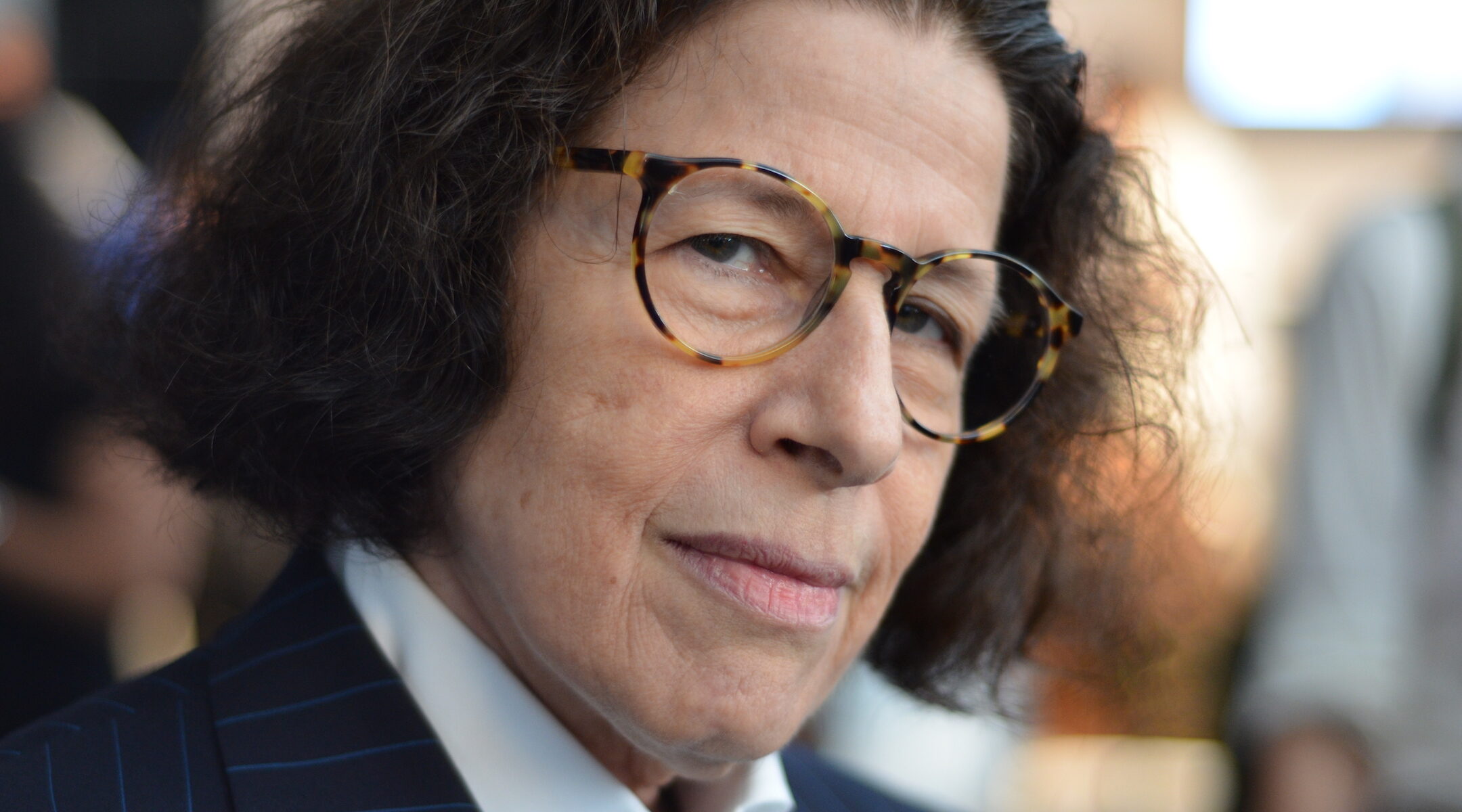(New York Jewish Week) — I was in my teens when I discovered Fran Lebowitz. I remember reading her humor collection “Metropolitan Life” in the high school library when I should have been studying. I knew then I’d want to grow up to write humor columns, and have occasionally succeeded, sometimes accidentally.
Her next collection, “Social Studies,” came out three years later, and then – well, few cases of writer’s block have been more scrutinized and lamented than hers. In the years since, she has managed to embody an archetypal New York Jewish sensibility just by being Fran Lebowitz – on talk shows, on the lecture circuit, and now in documentaries by her friend Martin Scorcese.
“Pretend It’s a City” on Netflix is the second of her collaborations with Scorcese. In seven half-hour episodes, Lebowitz clomps through New York in her signature blazers and Levi’s, mostly complaining about the city she purports to love. The reviews have been mixed, of the “too much of a good thing” variety. In fact, Variety complains that Lebowitz “tends to land back, and back, and back on the topic of how New York City is not what it once was back in the days [when] it was great.” Says Forward reviewer Irene Katz Connelly, “The litany of petty grievances makes for boring viewing. It also takes on an unsavory flavor in light of the affluence which, despite their humble origins, both Lebowitz and Scorsese now possess.” The New Yorker declares, “you can only listen to someone kvetch for so long.”
And in a great bit of meta-criticism, McSweeney’s published a humor piece — the kind Lebowitz herself might have written — imagining her as a cast member on “Sex and the City”: “My love life?” the Lebowitz character tells Miranda. “I’ll tell you what I love: I watched a tourist get hit by a Citi Bike on 57th Street. This, to me, was very pleasing.”
Lebowitz arrived in New York in the 1970s, and her frame of reference – and her lost paradise – is that gritty, sweaty, “Ford to City: Drop Dead” era, before the chain stores took over SoHo and the lawn chairs came to Times Square. You would think, to watch her series, that New York has become one big High Line – and yes, the city is cleaner and safer than it was when Lebowitz decamped here from suburban New Jersey. She is right when she notes that a city so hospitable to tourists has become inhospitable to the middle class and poor. New York isn’t just failing the creative class, but the working class.
If Lebowitz wants a taste of the unsanitized past, she might trying leaving Manhattan, and venture to the other boroughs. And she – and you – could find no better guide than John Wilson, who created his own series of half-hour documentaries about New York, “How To with John Wilson,” also available on Netflix. In each of the six episodes, Wilson assembles filmed snippets of street life and the occasional interview, and stitches them together with his wry, halting narration.
Fran Lebowitz sees Times Square and laments what was; John Wilson sees some nameless corner in Long Island City and loves what is.
Each episode is ostensibly a “how to” video, in the same way that “The Hitchhiker’s Guide to the Galaxy” will actually help you navigate deep space. Wilson will pick a theme — say, the ubiquitous scaffolding that leaves so much of the city in shadow — and turn it into a rumination on what we expect from our local government, the adaptability of humans to their built environment and the unintended consequences of regulation.
Did I say his films are hilarious? They are hilarious.
You rarely see the tourist sites Lebowitz sneeringly dwells on. Instead, his camera finds the broken furniture people leave in the street, the misspelled signage on sad restaurants, the costumed weirdoes who apparently are not interested in tips from tourists. It sounds depressing, but it isn’t. It’s affectionate. Wilson, behind the camera and seen only in brief glimpses, loves this mess of a city. His editing is manipulative – like all editing — but he also makes it impossible to look at New York without noticing the things he’d notice.
Lebowitz sees Times Square and laments what was; Wilson sees some nameless corner in Long Island City and loves what is.
The last episode of “How To” was filmed just as Covid hit the city, and includes ominous signs of things to come, including an endless line at his neighborhood grocery. Suddenly, the series takes on a new meaning, and the previous episodes are like time capsules, showing crowded streets, noisy restaurants, chance encounters and crowded train cars. You know: a city.
The New York Jewish Week brings you the stories behind the headlines, keeping you connected to Jewish life in New York. Help sustain the reporting you trust by donating today.






